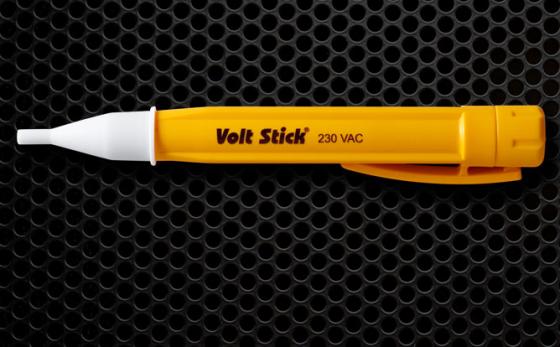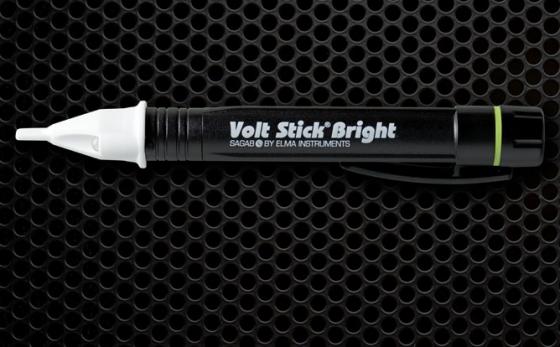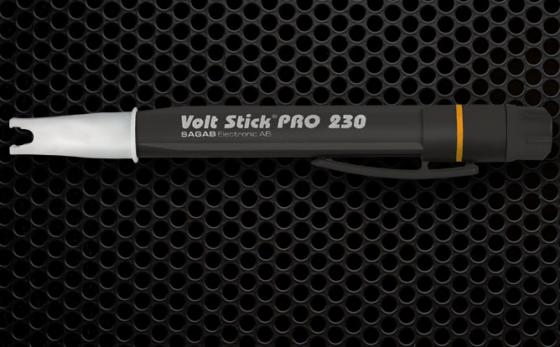How does a Volt Stick work?
Volt Sticks may seem very simple and straight forward but many people dismiss them as unreliable because they don’t fully understand how they work! Here we explain the technology behind a non-contact voltage tester...
Non Contact Voltage Testers go by many names but Volt Stick is the original Non Contact Voltage Tester and the only one to carry the Volt Stick logo.
Volt Sticks are designed for one very specific purpose - to detect the presence of an AC voltage. They are very easy to use but, as with any tool, it is important to read the operating instructions and to fully understand the principles behind them so that you know exactly when and where they will (and won’t!) work.
Volt Sticks may seem very simple and straight forward but many people dismiss them as unreliable because they don’t fully understand how they work...
So, how does a Volt Stick work?
Volt Sticks detect voltage by a non-contact means (i.e. without any metallic contact) that is without the need for a test probe to touch the wire or surface that is being tested.
The voltage, or more correctly the Electric Field, produced by the voltage is detected using the principal of Capacitive Coupling. To understand this we can turn to electrical circuit theory and look at how a Capacitor behaves...
A Capacitor has two conductors that are separated by a non-conductor or Dielectric. If an AC Voltage is connected across the two conductors, an AC Current will flow across the Dielectric as the electrons are alternately attracted or repelled by the voltage on the opposite plate; this makes a complete AC Circuit, even though there is not a complete ‘hard wired’ circuit.
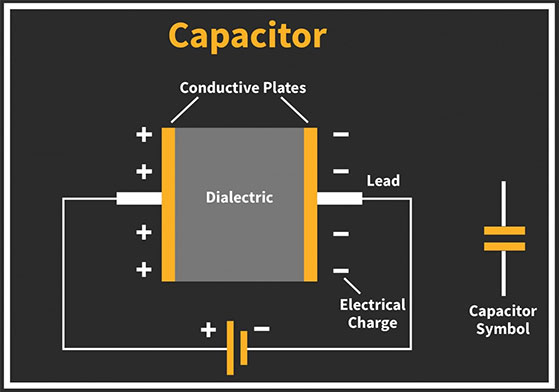
If we have two capacitors in series then a larger voltage will develop across the smaller capacitor.
This is the basis for understanding how Volt Sticks work. The live metallic component (such as a live wire) is the first plate of the smaller capacitor and the other plate is the sensor in the tip of the Volt Stick, the air between them is the Dielectric. The person holding the tester is the first 'plate' of the large capacitor, the ground is the second plate and the person's shoes or carpet is the dielectric between them.
So when you hold the Volt Stick in your hand and place the tip near a live conductor, you are inserting the high impedance sensing element into a capacitively coupled series circuit. Your hand, body and feet form a relatively large capacitor coupled to the floor. The sensor tip is a small capacitor coupled to the live voltage. The sensing circuit develops a larger voltage that turns on a light or sounds the buzzer in the Volt Stick.
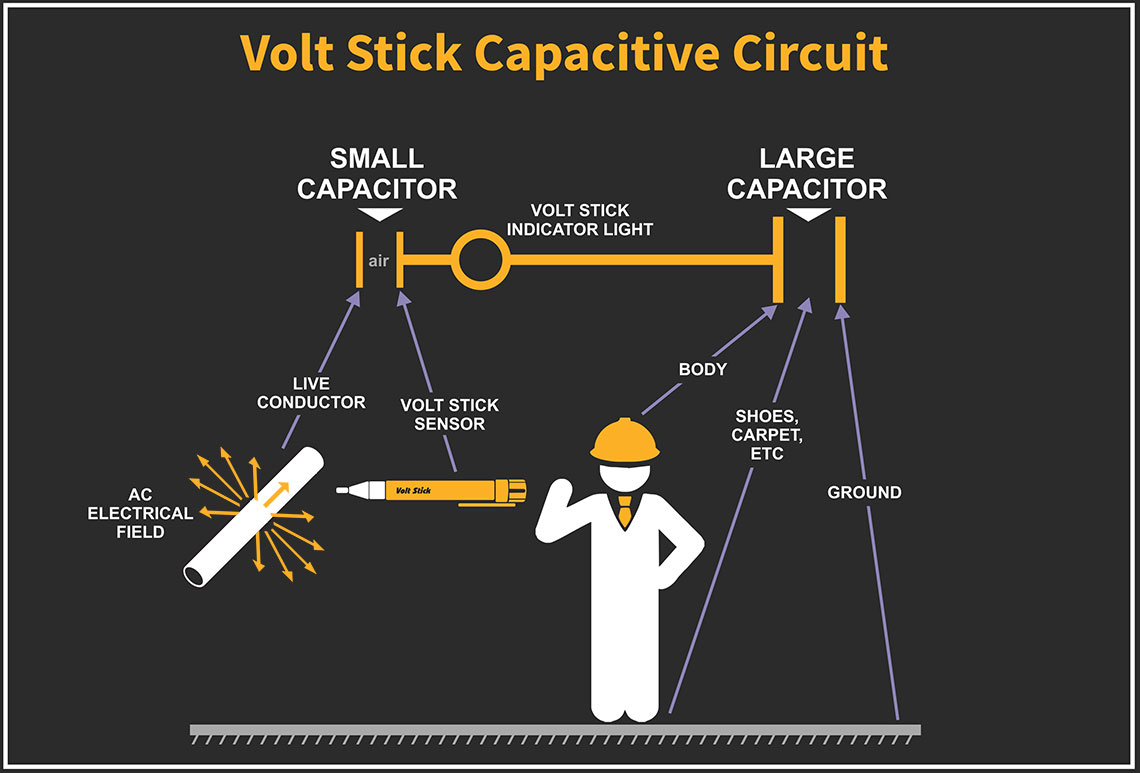
We can see from the diagram of the Electric Field, that the Lines are more concentrated close to the Live Conductor and disperse as you move away from it, this demonstrates that the Electric Field gets weaker as you move away from the Live Conductor, and therefore a Volt Stick will indicate as you get closer to the Live Conductor and will fall off as you move the Volt Stick away from it.
When might a Volt Stick fail to indicate a live voltage?
-
Potential Difference
It is important to remember that the user is always part of the capacitive circuit so must always be coupled to ground and at a different potential to what is being tested.
The user must be reasonably well grounded and isolated from the cable or piece of equipment they are testing. If there is no difference in potential between the user and the object they are testing, there's no chance the tester will work as designed.
With no potential difference, the Volt Stick will not indicate the presence of a Voltage.
This can demonstrated by placing a Volt Stick on an insulated table next to a ‘live’ power cable or outlet. The Volt Stick will indicate the presence of a Voltage while the user is holding it, as there is a potential difference but it will turn off when they remove their hand as there is no ground reference and they are at the same potential. Therefore, the Volt Stick may not work if the operator is isolated from ground (eg. high enough up a ladder to break the capacitive circuit).
Also the Volt Stick will not indicate the presence of a Voltage if the user is at the same potential as the object being tested.
In a very rare instance I recall an incident where both the Earth and Neutral supply to a property had been broken, this left the ground in the property at the same potential as the live supply.
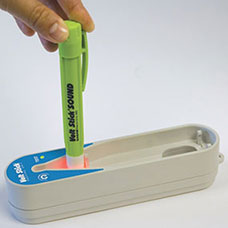 Because the user was at the same potential as the live being tested the Volt Stick did not indicate. This is another reason why we always recommend to prove the Volt Stick using a known voltage in the location where the tests are to be performed i.e. proving the operator has adequate capacitive coupling to ground and that there is a potential difference between them and the item they are testing. It is also worth pointing out that in this instance a tester making metallic contact would also have failed to identify the live voltage!
Because the user was at the same potential as the live being tested the Volt Stick did not indicate. This is another reason why we always recommend to prove the Volt Stick using a known voltage in the location where the tests are to be performed i.e. proving the operator has adequate capacitive coupling to ground and that there is a potential difference between them and the item they are testing. It is also worth pointing out that in this instance a tester making metallic contact would also have failed to identify the live voltage!
Just like any other test instrument, it is important to test your Volt Stick before and after each use. Again, a known voltage source at the testing location is best but if that’s not possible then a voltage proving unit could be used.
-
DC Voltage
Another instance where a Volt Stick will not indicate the presence of a voltage is if that voltage is DC.
The reason for this is because the Electric Field needs to build and collapse to induce a current in the Volt Stick’s circuit and this will only happen with an AC Voltage.
With a DC voltage, the field builds and remains in one direction and therefore no current is induced into the Volt Stick’s circuit and it will not indicate the presence of a DC voltage. If you refer to the capacitor video above you will see that a current will only flow with an AC Voltage.

-
Armoured or Shielded Cables
As we can see a Volt Stick detects the presence of an AC Voltage from the Electric Field that is created around the item being tested. An Electric Field will be present even if there is no load on the circuit and no current flowing! This is very useful as the Volt Stick will even work on ‘open ended’ cables. But there is a limitation; Electric Fields cannot penetrate through dense materials or grounded cabinets so a Volt Stick cannot be used on Armoured or Shielded Cables.
Also an Electric Field will not penetrate beyond an Earthed or Grounded metal cabinet or ducting, but if that metal cabinet or ducting is ‘live’ then the Volt Stick will indicate the presence of a live voltage.
-
When might a Volt Stick show a false live?
Occasionally we get reports of a Volt Stick indicating that something is live when there is no possibility of that being the case. Why might a Volt Stick give a false positive?
The first thing to say is that this is a ‘Fail Safe’ situation, the Volt Stick is alerting the user to the presence of an AC Voltage near by. There will be a reason for a Volt Stick to indicate the presence of a voltage, the user could be capacitively coupled to an Electric Field that they were unaware of!
In everyday life we are surrounded by many small 'stray' capacitors that we wouldn’t normally realise are there. For example, if you were standing on a carpeted concrete floor directly under a fluorescent light fitting and the light is on. Your body is conducting a very small AC current because it is part of a circuit consisting of two capacitors in series.
The two conductors or plates for the first capacitor are the live element in the light bulb and your body, and the dielectric is the air between them. The two conductors for the second capacitor are your body and the concrete floor, and the dielectric for the second capacitor is the carpet plus your shoes and socks.
If you were now to take a Volt Stick and move it towards a ‘dead’ cable or an item that was grounded you would complete a capacitively coupled circuit between the light fitting and the Volt Stick and it would indicate a live voltage. If you were unaware that you were capacitively coupled to the light fitting you could mistakenly think that the cable is live but the Volt Stick is actually detecting the Electric Field from the light fitting that is capacitively coupled to your body.
Similarly, the Volt Stick may falsely indicate a live voltage due to the proximity of hidden underfloor cabling or nearby high-Voltage overhead lines, where your body may become capacitively coupled to theses Electric Fields without you being aware!
-
Sensitivity
It is worth pointing out that Volt Sticks come in various sensitivities designed for different uses and many other manufacturers make similar products at other sensitivities. Always check that you are using the correct Volt Stick with the right sensitivity for the job that you are doing.
Read more about voltage detection:
More questions about Volt Stick and non-contact voltage testers?
If you have any questions regarding the use of your Volt Stick® device, or in choosing the correct model for your application, please contact the Volt Stick team by emailing us at info@voltstick.com

